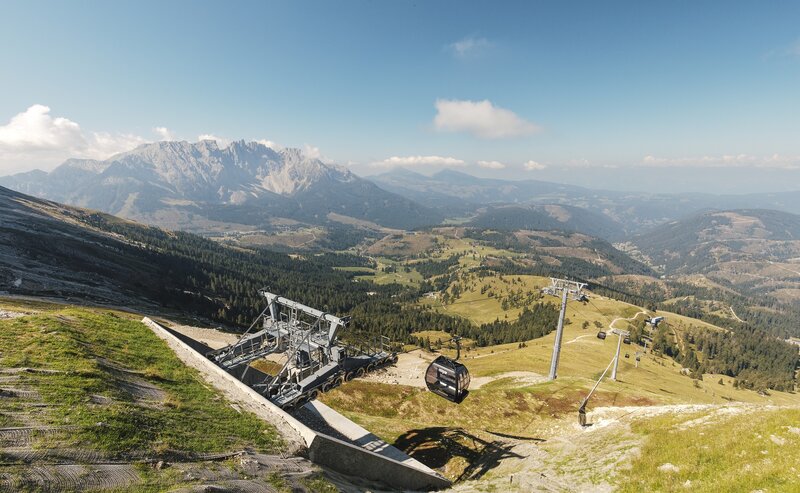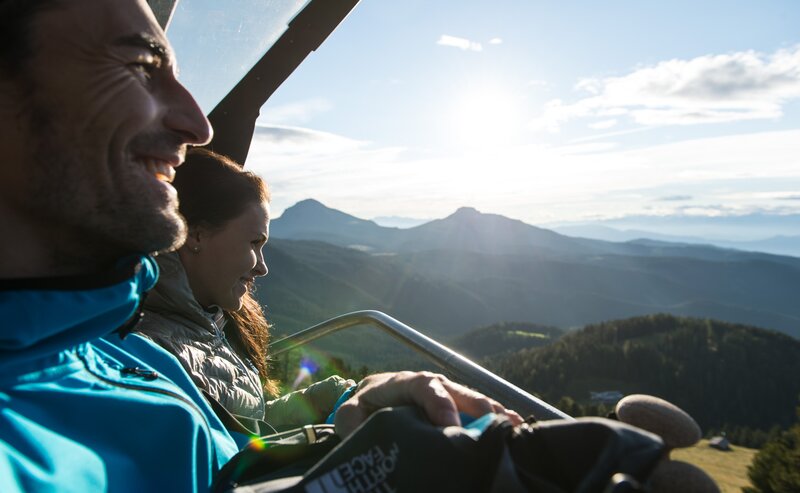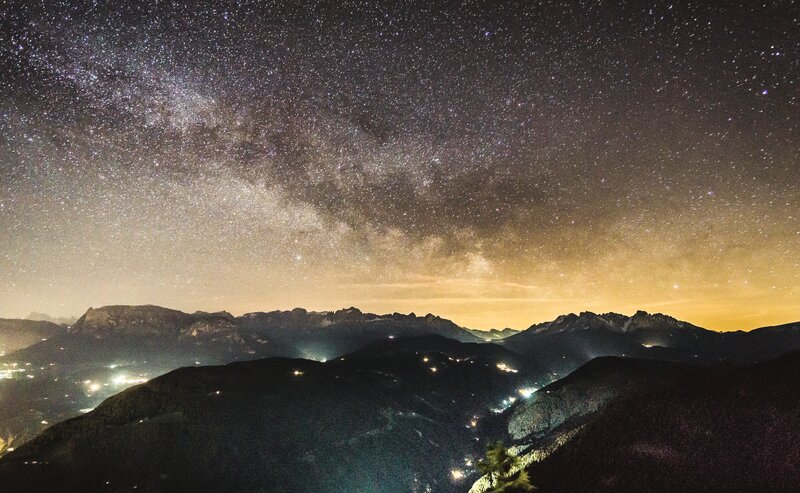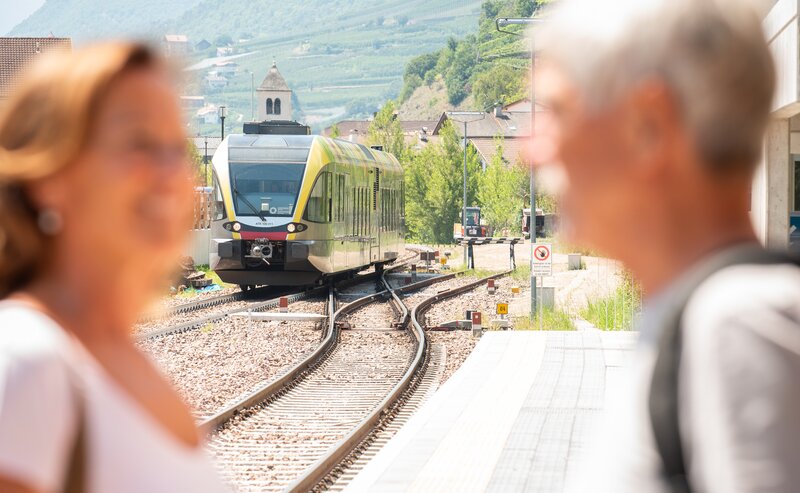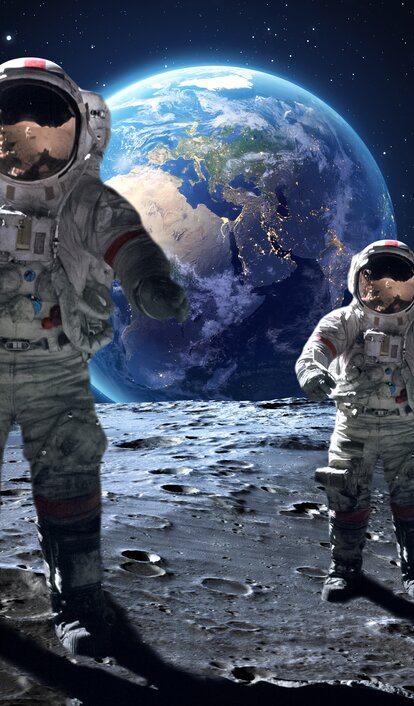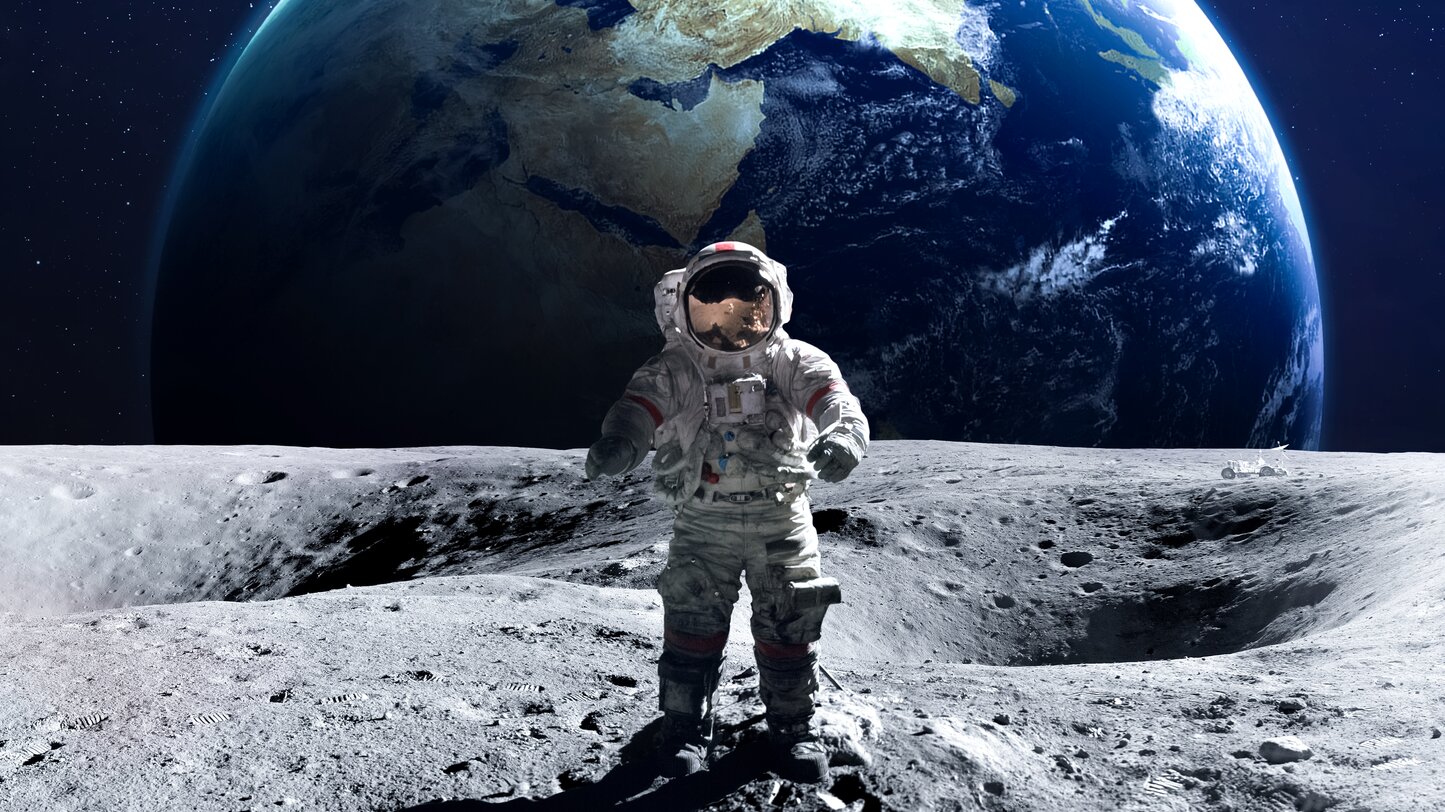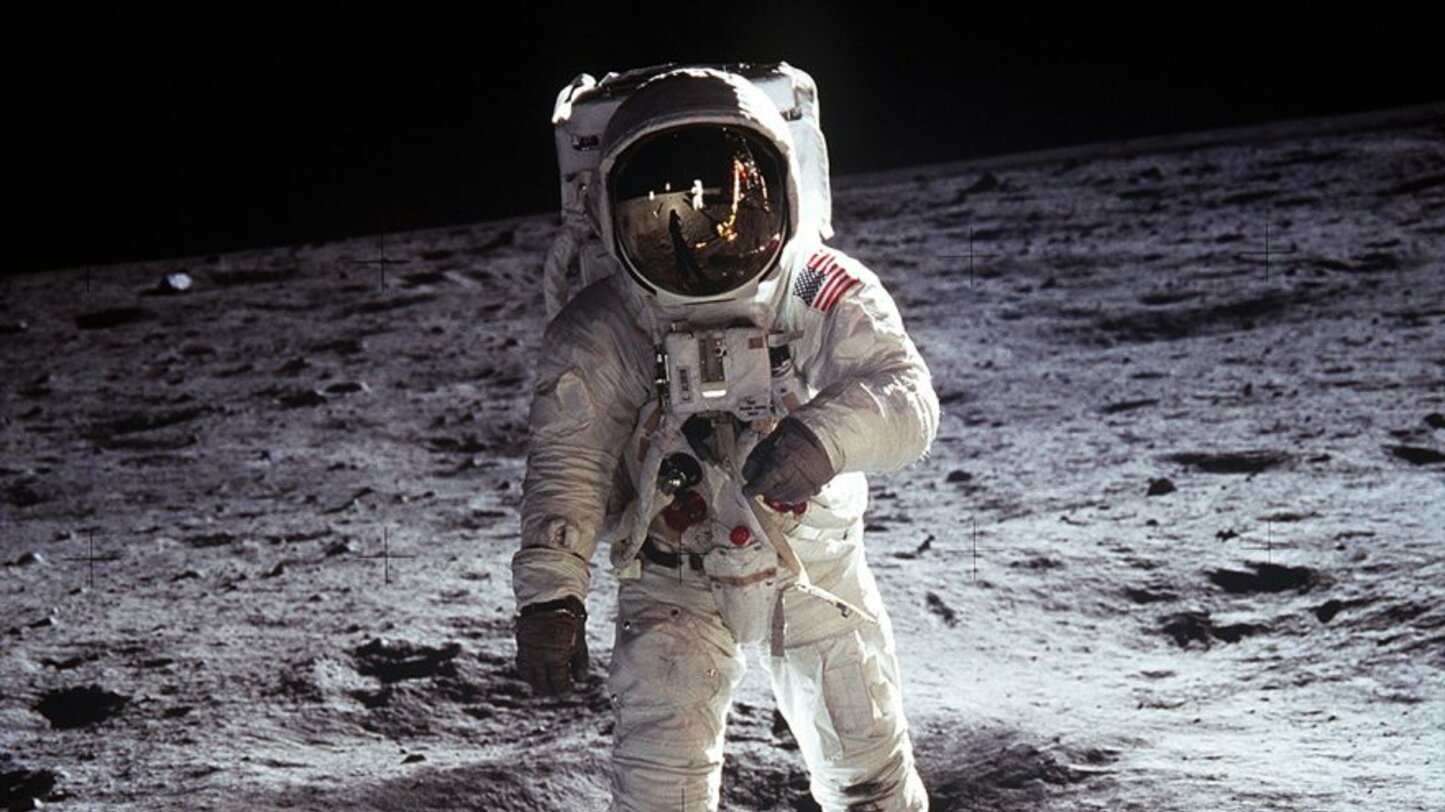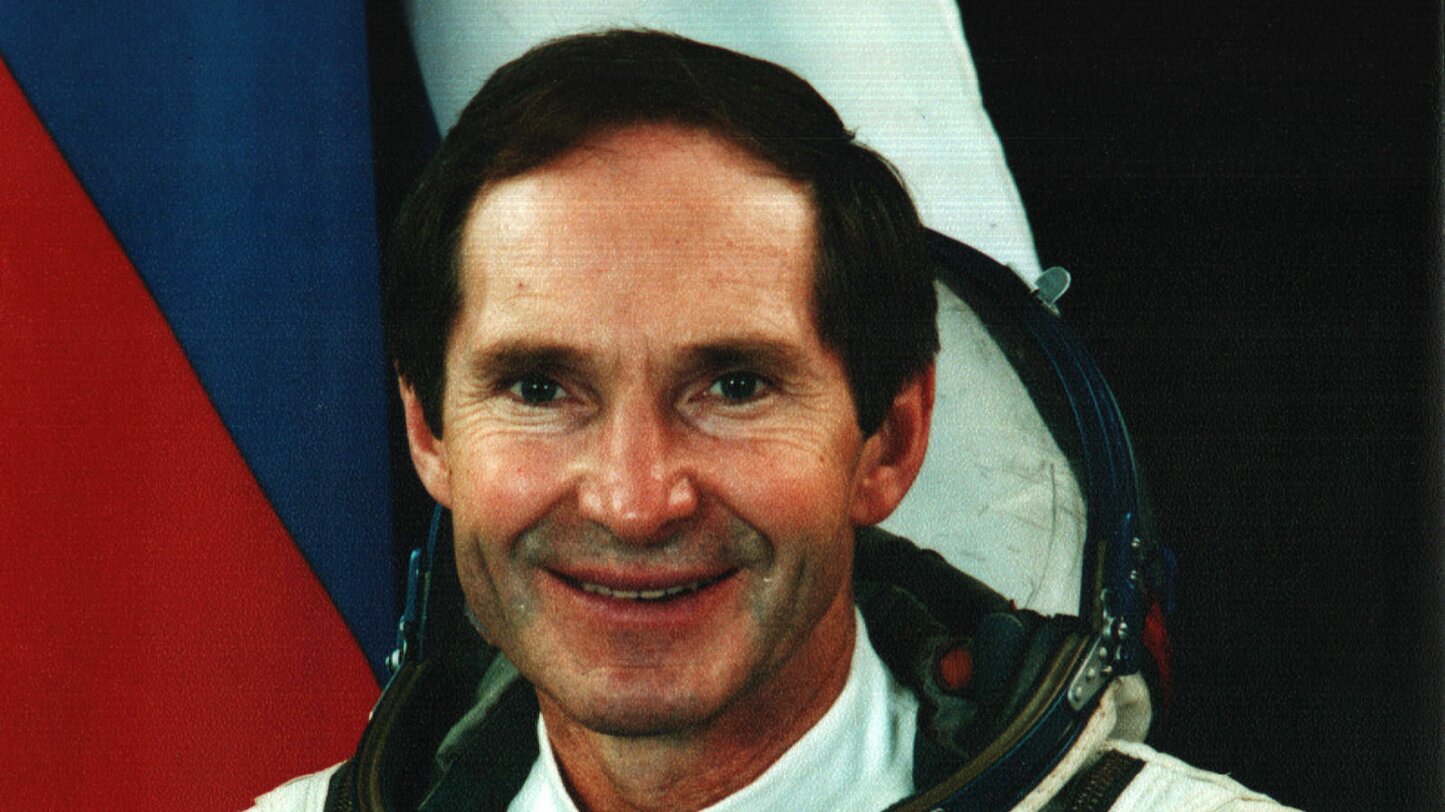Humans in space – yesterday’s achievements, today’s facts, tomorrow’s dreams
Just yesterday Neil Armstrong became the first man to set foot on the Moon; today unmanned lunar vehicles are exploring its dark side; and tomorrow we will set up human colonies there. The history of humans in space is one of inspiration, ideas and courage.
To the Moon and back
In 1961 Yuri Gagarin became the first human to enter orbit. In 1969, the year of the Moon landing, work began on the International Space Station (ISS). This marked the start of the exploration of space by human beings. Today the ISS is the largest artificial object orbiting our planet and has been home to astronauts from 20 countries. Meanwhile, unmanned vehicles continue to explore the dark side of the Moon as well as Venus and Mars. Satellites provide precise weather forecasts and navigation. As well as improving our everyday lives, space exploration also promotes international cooperation: the American space authority NASA, the European ESA, the Russian Roskosmos, the Canadian CSA and the Japanese JAXA all work together on the ISS.
Alto Adige in space
“The Earth seems so small and fragile. It is such a valuable tiny dot in this vast universe,” commented Russel Schweikart, pilot on the Apollo 9 mission, describing his feelings as he looked down on Planet Earth from above. If you step back and take a look at the bigger picture, our world is just one of many planets – a speck of dust in a never-ending cosmos. And Alto Adige, the northernmost province of Italy, could easily be considered as being less than nothing in this vast comparison. But if you take a closer look you will see that things are not that straight forward – our region has shown that size isn’t everything. Through hard work and determination, Alto Adige has made its own satellite: Max Valier. It weighs 15 kilos and is the result of a joint project between the technical colleges in Bolzano and Merano with the support of Orbit Hightechnology Bremen (OHB) and a range of sponsors. In 2017 Max Valier was launched into space and has since then been busy measuring the Earth’s magnetic field and testing an X-ray telescope on behalf of the Max Plank Institute near Munich. A truly great achievement for such a small region!
Shoot for the stars
Alto Adige has arrived in space – but space has also come to Alto Adige. Proof of this can be found in Collepietra, Europe’s first official star village. A closer look – at the village and at space – is well worth it, for researchers are already working on plans to set up human colonies on the Moon and send a manned mission to Mars. Today’s Earthlings could be tomorrow’s Martians. Humanity is truly shooting for the stars.
